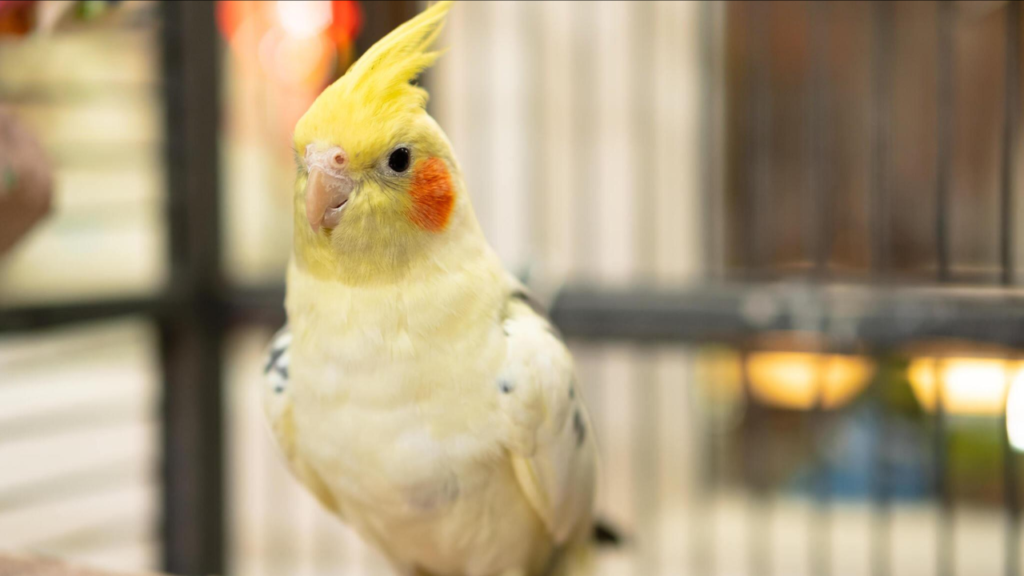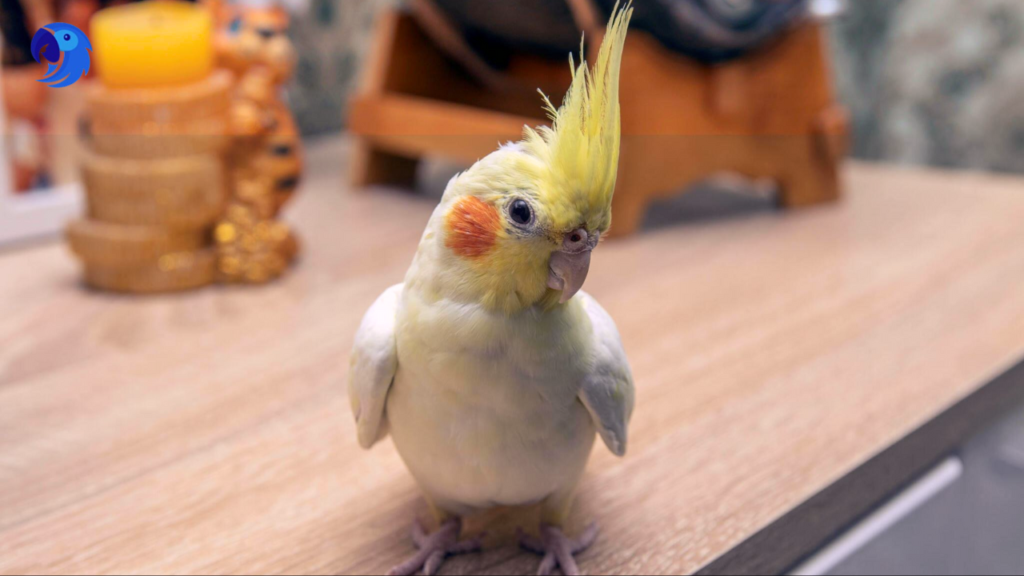A cockatiel could be a good choice if you want a tiny bird that is as charming and affectionate as a larger parrot but requires less space. Cockatiels are highly valued all around the world due to their charming personalities. They are easy to breed, docile, and enjoy being petted and stroked. Cockatiels make a smooth chirping noise that is quieter than other parrots. Cockatiels are easy to train, inexpensive, and simple to care for, making them an excellent choice for beginners.
- Cockatiel (Nymphicus hollandicus)
- Weight: 80-120 gm
- Sexual maturity: 6-12 months
- Avg. life span: 6 years
- Maximum recorded life span: 32 years
Where do cockatiels live?
According to Birdlife, Australia’s largest bird preservation organization, cockatiels are indigenous to semi-arid Australian regions, preferring open environments where they can drill on the floor, to thick rainforests other birds (like parrots) prefer.
Cockatiel Characteristics

“For many households, I recommend cockatiels as first birds because they are excellent starter birds,” according to Hess. “They’re big enough to have interactive personalities, and if you work with them, they’ll say a few phrases, but they’re also quite social and appreciate spending time with family. Furthermore, they are not so enormous that they are terrified of smaller children.
Dr. Kimberlee A. Buck, DVM, Diplomate ABVP (Canine and Feline Practice), Diplomate ABVP (Avian Practice), stated that cockatiels are also lively and gregarious. Overall, these birds enjoy communicating with people, but due to their small size, they should be treated gently, she noted. Children, in particular, should be supervised around cockatiels and taught to handle them gently without crushing their chests to prevent them from breathing.
Cockatiels, like other birds, have rather lengthy life expectancies and can survive into their thirties, according to Hess, so keep in mind that your new feathery friend will stay in your home for a while.
Furthermore, if you already have another bird, you should think twice before bringing a cockatiel home, unless you plan on keeping them in separate cages. “You can’t generalize that any bird gets along with another bird if you haven’t raised them together since they were young,” she told me. “Other birds may be introduced, but I wouldn’t suggest that they live in the same cage.”
Take care of your cockatiels

Consider some of the different ways you need to care for your fresh pet before you bring home a cockatiel, including the following:
Cockatiel Food

While feeding birds a diet of seeds alone used to be a popular convention, Hess said bird experts are usually going to recommend cockatiels live on a diet composed mostly of pellets these days.
“They create pellets specifically for your bird type and they are nutritionally complete, so those pellets should be about 70% of your cockatiel intake,” she said.
Aside from pellets, the remaining 30% of your cockatiel’s diet can include small amounts of new fruits and vegetables, as well as seeds as treats (which contain too much fat to be considered a normal source of food). “Cockatiels have elevated demands for vitamin A, so bell peppers, carrots, sweet potatoes, and vegetables are good to feed your bird in tiny amounts,” Hess told me.
Avoid avocados and onions, both of which can be harmful to birds, as well as anything containing salt, chocolate, or caffeine. If you’re unsure, contact your veterinarian for something fresh to feed your bird. Also, keep in mind that your bird will most likely graze all day, which is OK; however, at the end of the day, remove any fruits or vegetables that may have grown stale in the cage.
Grooming

In the wild, by jumping on branches and rocks, cockatiels are constantly wearing down their nails, but in captivity, every few months you will have to cut those nails yourself.
A tiny nail trimmer designed for a human infant can be used to firmly cut their nails (as long as you avoid the reddish-pink blood vessel running down the center of the nail, which can bleed when trimmed), and an Emory board or Dremel drill can be used to file the nail tips.
While wing trimming is debatable, Hess recommends it for birds who fly freely in the house on occasion since they may accidentally fly into (or out of) windows and mirrors.
When training your bird to step up to a perch on your side, it’s useful to have some control over where it may fly. Of course, whether or not you cut your bird’s wings is up to you, Hess said, and it will depend on each case. Trimmed wing feathers will grow back in a few months.
Cockatiel Care

According to Hess, cockatiel owners should look for reproductive issues in their birds. “Cockatiels are the most prolific layers of eggs we see, with the capacity to lay eggs every 48 hours,” according to her.
For domestic birds, excessive egg laying can cause egg binding (eggs becoming lodged in the reproductive system) and other reproductive problems. These birds may potentially acquire other medical issues, such as bacterial infections, dietary deficits, and kidney failure.
Domestic birds’ prodigious egg-laying can cause egg binding (eggs being caught in the reproductive system) and other reproductive complications. These birds may potentially acquire other medical issues, such as bacterial infections, nutritional deficits, and kidney failure.
“Most people don’t bring their birds to the vet, but when you get it first and then annually, you should bring your cockatiel,” Hess told me. “As people age, they are more likely to acquire problems like atherosclerosis, gout (or kidney failure), and other age-related disorders.
Because these birds are prey animals, they often conceal their signs until they are sick, so until it’s too late you may not even be able to say something is wrong. Staying ahead of medical issues is essential.
Habitat
While it’s okay to let your bird fly around from time to time (and you should!), when kept in a cage, your cockatiel will be safest, preferably a wide one with a variety of varying thickness perches, so they don’t always put pressure on the same places at the bottom of their feet, Buck said.
These birds also generally do some sort of “work” in the wild, such as finding mates and seeking nesting places, Hess said, so they should have toys in captivity to keep them mentally stimulated and involved.
Good alternatives include items that you can look beneath or lift to find your food. “For several hours a day, they will also need exposure to ultraviolet light, which you will need to modify every six months to assist them to create vitamin D in their skin, which is vital to enable them to obtain calcium from their food,” according to Hess.
Some birds enjoy bathing, so consider putting food in their cage where they can jump in, spraying them with a spray bottle every day, or bringing them with you to the shower. Hess noted that because these birds are gregarious, leaving the radio or television on might keep them busy, especially when you are not home.
Your cockatiel needs fresh air and ventilation, therefore never place your bird’s cage in a kitchen. “Birds are susceptible to Teflon pans fumes, and if they’re in the kitchen and you’re burning a non-stick pan, the bird might die from the fumes,” Hess told me. Bird owners should ideally avoid using nonstick pans for this purpose.
Keep in mind that covering your bird’s cage with a towel or a blanket at night is also not essential — most cockatiels will intuitively comprehend the distinction between night and day Buck said.

